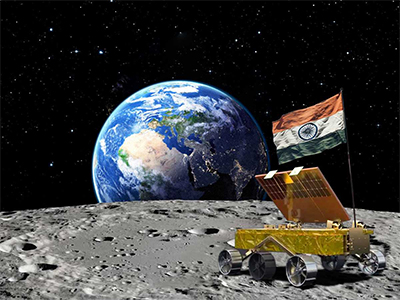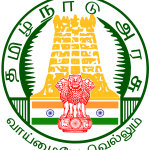
With the successful landing of Chandrayaan-3 on the Moon, the Indian Space Research Organisation (ISRO) has added a new chapter to its history of achievements, marked by significant milestones in three major programmes: satellites, launch vehicles, and planetary exploration.
Satellite Programmes
The launch of the Aryabhata satellite on April 19, 1975, marked India’s entry into the space era. Built to conduct experiments in X-ray astronomy, aeronomics, and solar physics, the 360 kg spacecraft was entirely designed and fabricated by ISRO. Prime Minister Indira Gandhi named it after the legendry fifth-century mathematician and astronomer, choosing Aryabhata ahead of Mitra, to signify the friendship between the Soviet Union and India, and Jawahar.
“Aryabhata became the forerunner of our space programme and provided us confidence to build state-of-the art application satellites for communication, remote sensing of natural resources and meteorological investigations,” UR Rao, who led the development of ISRO’s satellite programme, wrote in From Fishing Hamlet to Red Planet: India’s Space Journey, a book written by former ISRO scientists.
Two experimental remote-sensing satellites that followed – Bhaskar-1 in 1979 and Bhaskar-2 in 1981 – laid the foundations for the Indian Remote Sensing (IRS) satellite system, a series of Earth observation spacecraft.
IRS-1A was launched into a polar sun-synchronous orbit (in which spacecraft are in the same ‘fixed’ position relative to the Sun) from the Baikonur Cosmodrome launch pad in Kazakhstan on March 17, 1988. Its LISS-I and LISS-II cameras provided imagery for various land-based applications such as agriculture, forestry, geology and disaster management.
Also in 1981, an experimental communication satellite called Ariane Passenger Payload Experiment (APPLE) was launched, which inspired the Indian National Satellite System (INSAT), a series of multipurpose geo-stationary satellites that aimed to meet a range of telecommunications, broadcasting, meteorology, and search and rescue needs.
Starting with the INSAT-2 series, all satellites of the system have been indigenously made. The first INSAT-2 spacecraft, INSAT-2A, which was launched on July 10, 1992, was India’s first multipurpose satellite.
More recently, a notable satellite mission has been the Indian Regional Navigation Satellite System (IRNSS) or NavIC (Navigation with Indian Constellation), which began with the launch of India’s first dedicated navigation satellite IRNSS-1A on July 1, 2013.
Launch Vehicles
On November 21, 1963, the US Nike Apache ‘sounding rocket’ was launched from Thumba, near Thiruvananthapuram. The rocket was taken to the launch site on a bullock cart. Sounding rockets are suborbital rockets that carry experiments to the upper atmosphere, but are not capable of exiting the Earth’s gravity.
The mission to build the first Indian launch vehicle was led by APJ Abdul Kalam, who had joined ISRO in 1969. Success didn’t come instantly, as the first attempt to send the SVL-3 into space on August 10, 1979, ended in failure. Space scientist Ramabhadran Aravamudan wrote about the failure in his book, ISRO: A Personal History:
“The burning of the first stage seemed normal. I was watching Kalam for some sign. Had the rocket performed well? After some time. I saw a blank and fixed expression on his face, followed by disappointment He turned around and made a thumbs down gesture. Something had gone wrong.”
SVL-3 had gone out of control and splashed into the Bay of Bengal about five minutes after taking off.
Kalam and his team learnt quickly. The second attempt for the launch was scheduled for July 18, 1980. This time SLV-3 soared without a glitch, and placed its payload, a 40 kg experimental satellite called Rohini 1, in orbit. It made India the sixth member of the exclusive club of space-faring nations, and boosted ISRO’s morale to new heights.
The development of a new generation launch vehicle- the Polar Satellite Launch Vehicle (PSLV) – started in 1982, and its maiden successful launch took place in October 1994. PSLV could carry payloads up to 1,000 kg, and marked India’s entry into the Big Rockets league.
Over the years that followed, PSLV became ISRO’s reliable and versatile work horse vehicle, which launched numerous Indian and foreign customer satellites into space. Chandrayaan-1 rode a PSLV rocket in 2008, as did Mangalyaan, the Mars Orbiter mission, in 2013. PSLV also helped India enter the arena of satellite navigation, crucial for both civilian and defence applications.
ISRO’s next – and latest – class of rockets the Geosynchronous Satellite Launch Vehicle(GSLV), addressed the two main limitations of PSLV: it can deliver payload of about 1,750 kg to lower Earth orbits, up to an altitude of 600 km from the Earth’s surface; and it can go a few hundred kilometres higher in Geostationary Transfer Orbit (GTO) though with a reduced payload.
The GSLV also uses cryogenic engines – they consist of liquid hydrogen and liquid oxygen – that provide far greater thrust. ISRO developed the cryogenic engines indigenously after the US refused to transfer the technology to India in the 1990s.
The big success came in December 2014, with the experimental flight of the third generation (Mk-III) GSLV, now known as launch Vehicle Mark-3, with an indigenous Cryogenic engine. The rocket can put a
4,000 kg payload into geostationary orbits that are over 30,000 km from Earth- it is ISRO’s heaviest launch vehicle right now. LVM-3’s first successful mission was in 2017, when it carried the GSAT-19 satellite, a communication spacecraft, into space.
Subsequently, the same launch vehicle put the Chandrayaan-2, weighing 3,850 kg. outside the Earth’s atmosphere in 2019. And last month, it was LVM-3 that took Chandrayaan-3 into space.
Planetary exploration
lt took ISRO more than four years to convince the Indian government to green light the Moon mission-it was finally announced by Prime Minister Atal Bihari Vajpayee in his Independence Day address in 2003. ISRO launched Chandrayaan-1, an orbiter mission, on October 22, 2008, and the spacecraft entered lunar orbit on November 8. Six days later, the Moon Impact Probe, which had the lndian colours on its sides, was made to crash land on the lunar surface – to leave India’s mark on the Moon. With this, ISRO became the fifth country to reach the lunar surface.
With the launch of its interplanetary Mangalyaan mission on September 24, 2013. ISRO became only the fourth space agency to reach Mars orbit (after Roscosmos, NASA, and ESA). The mission was a “technology demonstrator” project to develop the technologies for designing, planning, managing, and operations of an inter planetary mission.
The sequel to the first Chandrayaan mission was launched on July 22, 2019. Even though the Vikram lander failed to reduce its velocity optimally to ensure a soft landing, the mission was not a total failure. The Chandrayaan-2 orbiter continued to work and gathered a wealth of new information that has expanded knowledge about the Moon and its environment.
Chandrayaan-3 has now accomplished what Chandrayaan-2 couldn’t.





